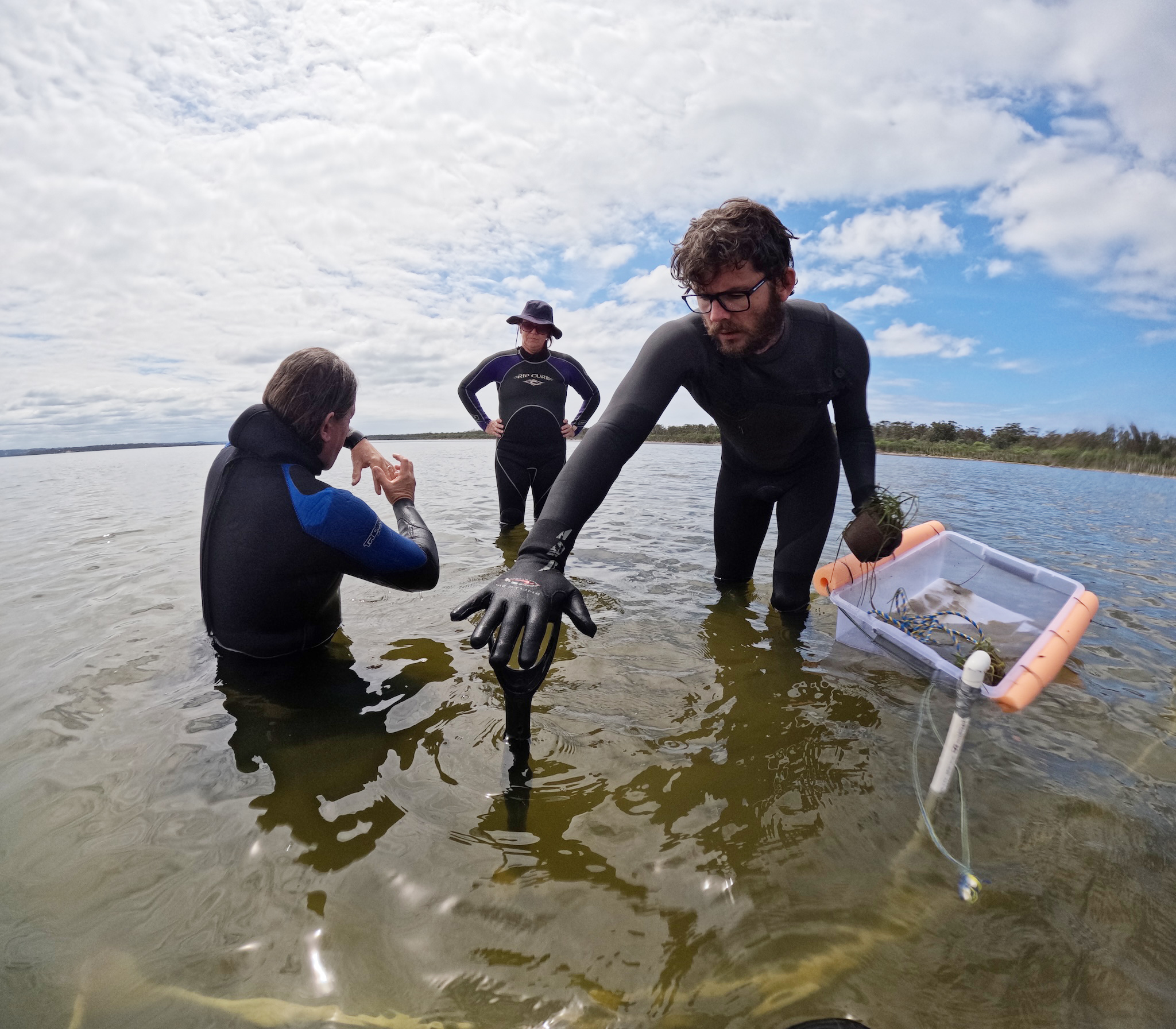Investing In Scotland's Coast: The Importance Of Seagrass Planting

Table of Contents
The Ecological Significance of Seagrass Beds in Scotland
Seagrass meadows are often overlooked, yet they play an outsized role in the health of Scotland's marine environment. Their ecological significance is immense, making investment in their protection and restoration paramount.
Biodiversity Hotspots
Seagrass meadows are incredibly biodiverse habitats, acting as vital nurseries for a vast array of fish and invertebrate species. These underwater grasslands support a complex and interconnected food web, underpinning the health of the wider ecosystem.
- Increased fish stocks: Many commercially important fish species rely on seagrass beds for spawning and juvenile development, leading to healthier and more abundant fish populations.
- Improved shellfish populations: Seagrass provides crucial habitat for shellfish, including scallops, mussels, and cockles, contributing to both ecological balance and sustainable shellfisheries.
- Habitat for endangered species: Several endangered species, including specific populations of Scottish seahorses and other vulnerable marine life, depend on seagrass for survival. Their protection directly supports the conservation of these threatened species.
- Support for the food web: Seagrass forms the base of a complex food web, supporting a cascade of life from microscopic organisms to larger predators, ensuring the resilience and stability of the ecosystem.
Carbon Sequestration – A Natural Climate Solution
Seagrass is remarkably effective at absorbing and storing atmospheric carbon dioxide (CO2), making it a crucial "blue carbon" ecosystem in the fight against climate change. Its carbon sequestration capacity significantly surpasses that of many terrestrial ecosystems.
- Comparison of seagrass carbon sequestration rates to other ecosystems: Studies show that seagrass meadows sequester carbon at a rate far exceeding that of terrestrial forests, making them highly effective in mitigating climate change.
- The role of seagrass in reducing atmospheric CO2: By absorbing CO2 from the atmosphere and storing it in its sediments, seagrass helps reduce the concentration of greenhouse gases, contributing to climate change mitigation efforts.
- Long-term carbon storage potential: The carbon stored in seagrass sediments is often locked away for centuries, offering a long-term solution for carbon storage, unlike many terrestrial ecosystems which can release stored carbon more easily.
Coastal Protection and Erosion Control
The dense root systems of seagrass meadows act as natural buffers, dissipating wave energy and protecting coastlines from erosion. This natural coastal defense provides numerous benefits.
- Reduced wave energy: Seagrass beds effectively reduce the impact of waves, minimizing coastal erosion and protecting shorelines from storm damage.
- Stabilization of sediments: The roots of seagrass plants bind sediments together, preventing erosion and maintaining the stability of coastal areas.
- Protection of coastal infrastructure: By reducing erosion, seagrass protects vital coastal infrastructure, such as roads, buildings, and harbors, saving significant costs in the long run.
- Benefits for coastal communities: The protection offered by seagrass meadows safeguards coastal communities from the damaging effects of storms and erosion, contributing to their safety and economic well-being.
Economic Benefits of Seagrass Restoration and Planting
Investing in seagrass restoration and planting projects isn't just environmentally responsible; it's also economically beneficial, generating significant returns for Scotland's coastal communities.
Sustainable Fisheries and Tourism
Healthy seagrass meadows are crucial for sustainable fisheries and thriving tourism industries. The enhanced biodiversity they support translates directly into economic gains.
- Increased fishing yields: The abundance of fish and shellfish supported by seagrass meadows leads to increased catches and improved livelihoods for those involved in the fishing industry.
- Improved tourism revenue from recreational activities: Seagrass beds attract divers, snorkelers, and boaters, generating tourism revenue and supporting local businesses. The appeal of healthy marine environments brings visitors to coastal areas.
- Creation of green jobs in restoration and monitoring: Seagrass restoration projects create new green jobs in areas like ecological monitoring, restoration work, and community engagement.
Carbon Credit Markets and Environmental Funding
Seagrass restoration projects can attract substantial funding through carbon credit markets and environmental grants, providing a financial incentive for conservation efforts.
- Potential revenue streams from carbon offsetting: Companies and organizations can invest in seagrass restoration projects to offset their carbon footprint, generating revenue for conservation efforts.
- Access to funding for large-scale restoration initiatives: Carbon credit schemes and environmental grants provide opportunities to secure funding for ambitious seagrass restoration projects.
- Showcasing Scotland's leadership in blue carbon initiatives: Investing in seagrass restoration positions Scotland as a leader in blue carbon initiatives, attracting further investment and international recognition.
Challenges and Opportunities in Seagrass Planting in Scotland
While the benefits of seagrass planting are clear, successful projects require careful planning and collaboration.
Identifying Suitable Sites and Managing Threats
Careful site selection and ongoing management are crucial for the long-term success of seagrass planting initiatives.
- Assessment of water quality, sediment type, and light availability: Suitable sites need appropriate water quality, sediment type, and sufficient light penetration for seagrass to thrive.
- Threats from pollution and invasive species: Potential threats from pollution and invasive species must be carefully considered and mitigated.
- Ongoing monitoring and maintenance: Regular monitoring and maintenance are essential to ensure the health and survival of planted seagrass meadows.
Community Engagement and Collaboration
Successful seagrass restoration requires strong collaboration between government agencies, scientists, and local communities.
- Educational initiatives: Raising awareness about the importance of seagrass and engaging local communities in conservation efforts is crucial.
- Volunteer programs: Involving local communities in seagrass planting and monitoring activities fosters a sense of ownership and responsibility.
- Partnerships with local businesses: Collaborating with local businesses can provide resources and expertise, ensuring the long-term sustainability of seagrass restoration projects.
- Development of sustainable practices: Promoting sustainable practices within coastal communities ensures the ongoing protection of seagrass meadows.
Conclusion
Investing in Scotland's coast through seagrass planting presents a compelling opportunity to achieve significant ecological and economic gains. By protecting and restoring these vital underwater meadows, we can safeguard biodiversity, mitigate climate change, and strengthen coastal communities. From enhanced fisheries and tourism to the vital role of carbon sequestration, the advantages are numerous and far-reaching. Let's work together to ensure the continued health of Scotland's seagrass ecosystems. Support initiatives focused on seagrass planting and restoration in Scotland – it’s a crucial investment in our shared future. Learn more about how you can contribute to seagrass conservation and help protect Scotland's precious coastline. Find out more about local seagrass initiatives and how you can get involved in protecting this vital resource.

Featured Posts
-
 Bakole Ajagba Heavyweight Fight Added To Canelo Alvarezs May 3rd Event
May 04, 2025
Bakole Ajagba Heavyweight Fight Added To Canelo Alvarezs May 3rd Event
May 04, 2025 -
 Understanding High Stock Market Valuations Bof As Viewpoint
May 04, 2025
Understanding High Stock Market Valuations Bof As Viewpoint
May 04, 2025 -
 Meet The Jockeys Your 2025 Kentucky Derby Preview
May 04, 2025
Meet The Jockeys Your 2025 Kentucky Derby Preview
May 04, 2025 -
 Indy Car On Fox What To Expect In The Inaugural Season
May 04, 2025
Indy Car On Fox What To Expect In The Inaugural Season
May 04, 2025 -
 Reintroduction Of Ow Subsidies In The Netherlands A Bid To Attract Investment
May 04, 2025
Reintroduction Of Ow Subsidies In The Netherlands A Bid To Attract Investment
May 04, 2025
